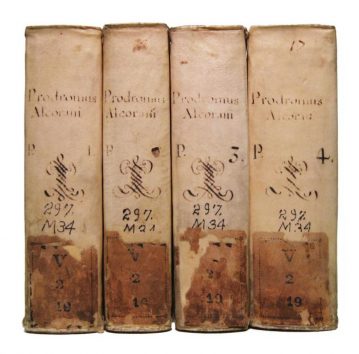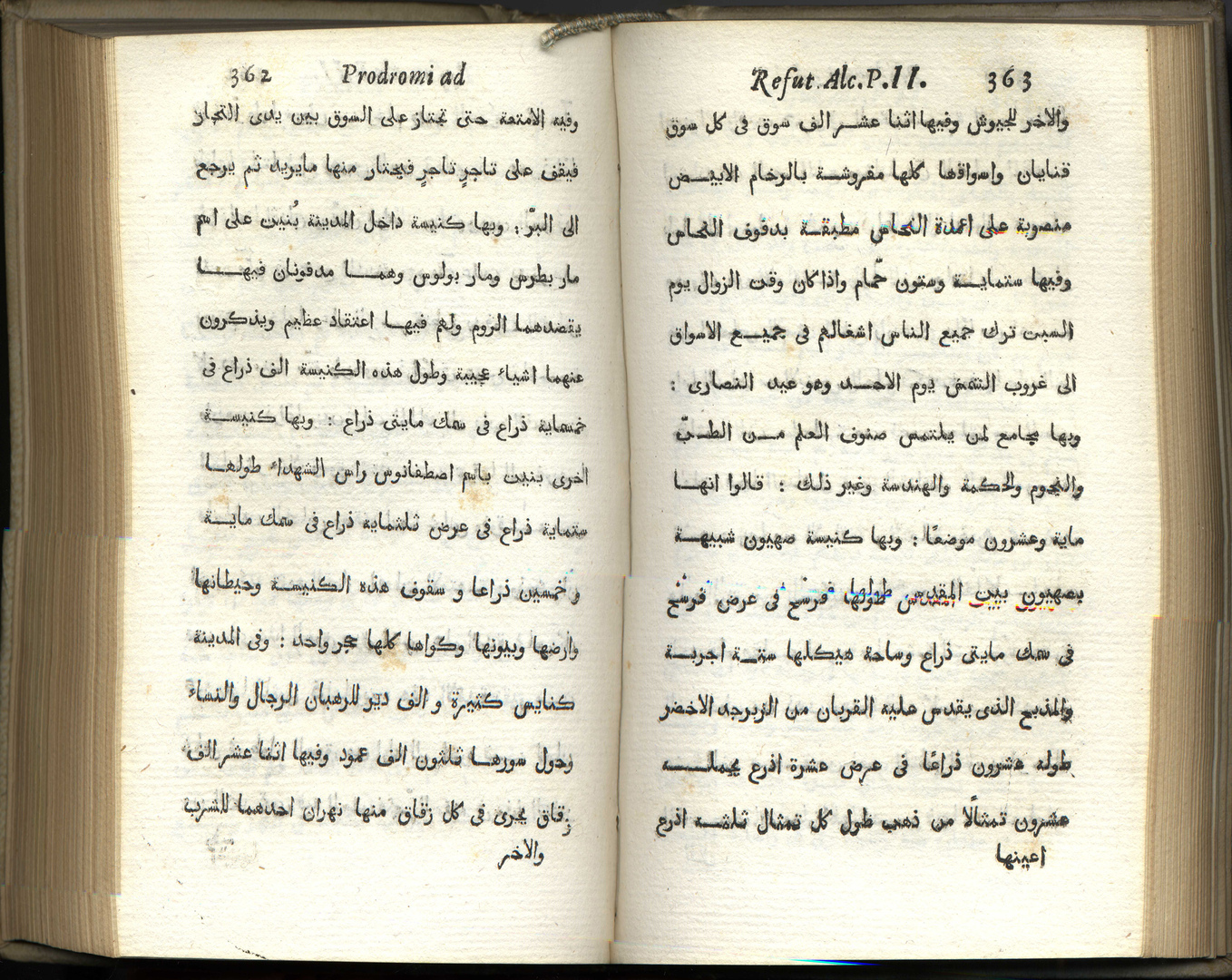Prodromus ad refutationem Alcorani. In quo per quatuor…verae religionis notas Mahumetanae sectae falsitas ostenditur: Christianae religionis veritas comprobatur… FOUR VOLUMES.
Qur’an. Translated by Ludovicio Marracci
Synopsis
First edition of Marracci’s refutation of the tenets of Islam. A second edition appeared in 1698 in Padua. The best and most beautiful Qur’an edition until the publication of Flugel’s edition, and the second Latin translation to be published, after the Bibliander edition, with the Arabic types financed by Cardinal George Barberigo. Not replaced until the publication of Flugel’s edition.
Prior to this edition, the Qur’an had only been printed twice in Arabic in its entirety, in Venice in 1538 (of which only a single copy survives) and in Hamburg in 1694. This edition of the Qur’an is the first scholarly edition with a Latin translation. It represents a first step towards more balanced appreciation of the religion of Islam after centuries of distrust.
Nonetheless, the editor still saw himself obliged to have the text preceded by a lengthy refutation of Mohammedan tenets, and a biography of the Prophet (culled from native sources). This refutation, the Prodromus ad refuationem Alcorani, had already been published separately seven years before in Rome. Marracci’s initial idea to have the Arabic text printed in Holland met with a refusal from the Dutch printers, who would not have the text edited with the Prodomus (arguing that the text and the translation of the Qur’an could do without the refutation). The Latin translation alone, which renders the Arabic original rather literally, with many grammatical and exegetical annotations, was republished in 1721 by Reineccius in Leipzig.
The actual main part of this edition of the Qur’an, the Refutatio Alcorani, consists of a Latin preface to Emperor Leopold I (6 pages), a preface to the reader (pp. 1-17) and three print privileges (pp.18-20). The Suras in the Arabic text follow, then comes the Latin translation, the Latin annotations as well as the Latin refutations (pp. 1-835). The epilogue consists of pages 836-838. The last (not paginated) sheets contain the index and errata. The famous Prodromus was bound in front of the epilogue.
Bibliographic references: Brunet III, 1307; Fück 178; Pfannmuller 134, 170, 208, 214.








